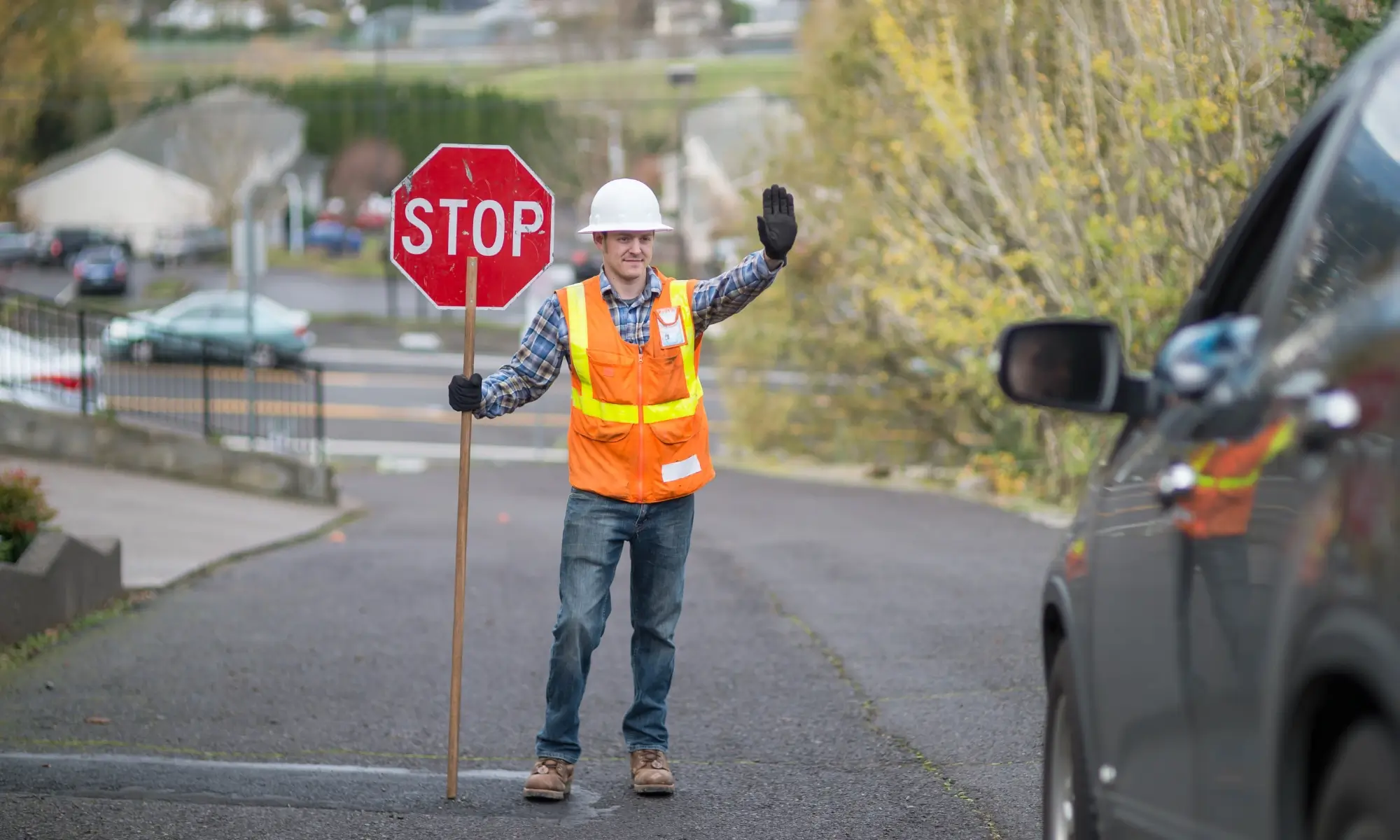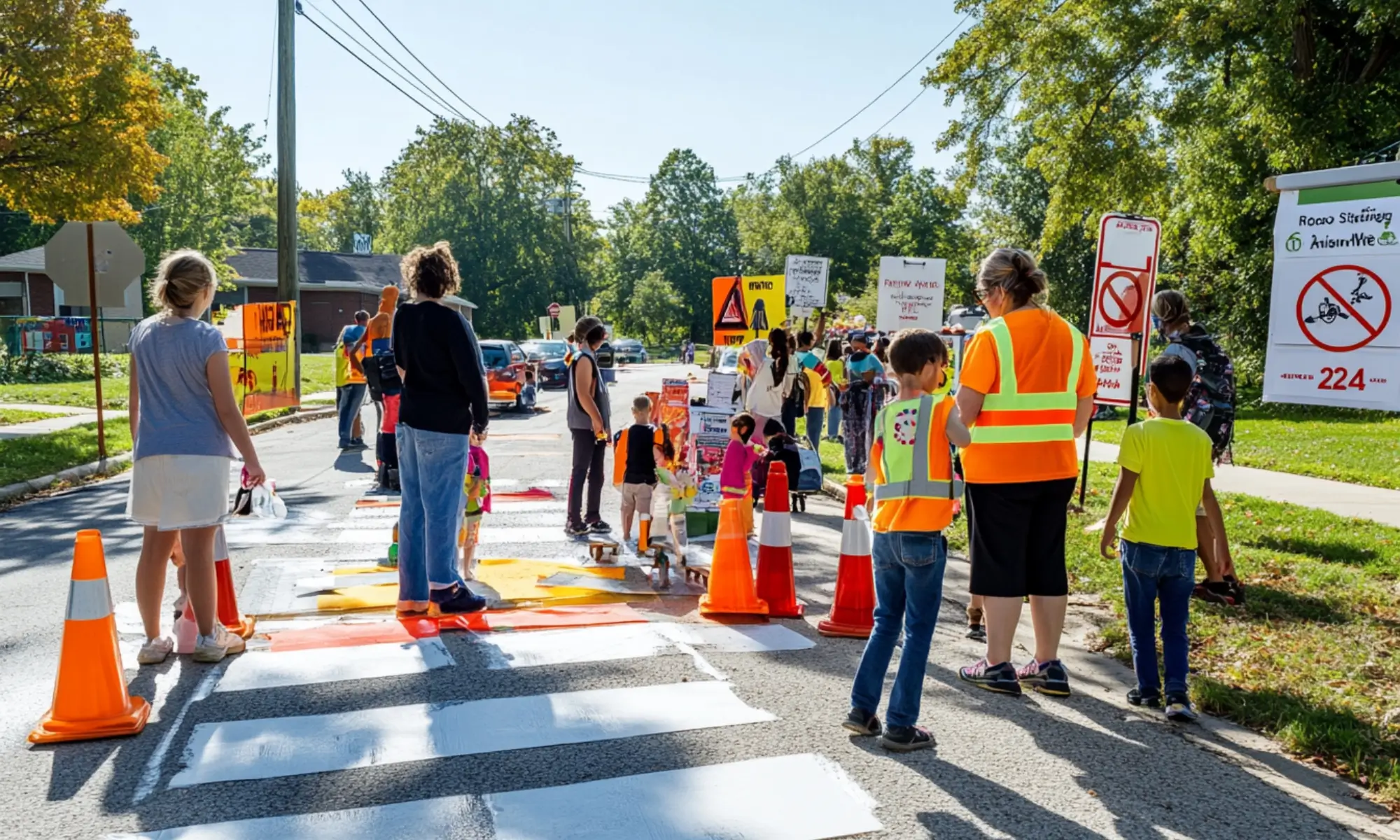Road Safety Week is a global event dedicated to promoting road safety awareness, advocating for safer driving habits, and preventing road traffic accidents. Each year, communities, schools, organizations, and governments come together to spotlight the importance of road safety and inspire individuals to take proactive steps for safer roads.
This comprehensive guide will cover everything you need to know about Road Safety Week, its history, significance, and ways to participate in this vital campaign.

What Is Road Safety Week?
Road Safety Week is an annual event organized by various safety advocacy organizations worldwide to emphasize the importance of road safety. The campaign encourages people to observe safe driving practices, raises awareness about the impact of road accidents, and promotes initiatives to make roads safer for everyone. In the UK, for example, the charity Brake organizes events that provide resources and support to individuals and communities engaging in road safety activities.
When Is Road Safety Week 2024?
Road Safety Week is observed during the third week of November each year. In 2024, it will take place from November 19 to November 25. During this week, events and activities will be held worldwide to encourage safer road practices and raise awareness about road safety.
Key Themes of Road Safety Week 2024
Each year, Road Safety Week centers around a specific theme to address particular road safety challenges. For 2024, the theme is “After the Crash, Every Road Victim Counts,” focusing on the importance of supporting individuals and families affected by road accidents. This theme underscores the need for sustainable funding and equal care for road victims, regardless of their circumstances.
Why Road Safety Week Matters
Road traffic accidents claim an estimated 1.3 million lives annually and injure millions more, with tragic consequences for families and communities. Road Safety Week highlights the importance of preventing such accidents and creating safer environments for everyone, including drivers, pedestrians, cyclists, and motorcyclists. This observance also brings attention to road crashes’ social and economic toll, urging stronger road safety measures and support for affected individuals.
The Real Impact
Behind every statistic is a story of a life changed forever. Whether it’s a family grieving a loved one or someone facing lifelong injuries, road accidents leave lasting impacts. Road Safety Week puts a human face on these statistics, highlighting personal stories and calling for better care and support for road victims and their families.

Ways to Participate in Road Safety Week 2024
There are numerous ways to get involved in Road Safety Week, whether as an individual, organization, or community. Here are some impactful ways to participate:
- Practice Safe Driving: Commit to driving safely by obeying traffic rules, wearing seat belts, and avoiding distractions. Set a positive example on the road and inspire others to do the same.
- Organize Local Events: Host workshops, seminars, or community gatherings focused on road safety. These events can help educate the public about the dangers of unsafe driving and the importance of following road safety measures.
- Promote Pedestrian Safety: Educate pedestrians about safe crossing practices, and encourage drivers to respect pedestrian rights at crosswalks. This is particularly important in high-traffic areas and near schools.
- Support Road Safety Charities: Contribute to organizations like Brake, which provide resources, support, and advocacy for road safety initiatives. Donations can help fund campaigns, support road victims, and promote legislative change.
- Engage Schools and Youth: Involve schools in road safety campaigns to educate young people on safe behaviors. Programs can include activities like bicycle safety workshops, pedestrian safety lessons, and informative presentations on responsible driving.

Road Safety Week’s Global Reach
Road Safety Week has evolved into a global campaign with a far-reaching impact, observed in numerous countries to promote road safety and prevent traffic-related injuries and fatalities. This movement is recognized and supported by major organizations worldwide, including the United Nations and the World Health Organization (WHO), which has helped amplify its significance and influence across continents.
Here’s how Road Safety Week achieves its global reach:
United Nations Global Road Safety Week
Organized by WHO and observed every two years in May, UN Global Road Safety Week focuses on road safety as a fundamental public health issue. With campaigns around specific themes (such as lowering speed limits in populated areas), the event unites countries under a common mission to reduce road accidents and fatalities. It particularly emphasizes the needs of low- and middle-income countries, where road safety risks are often higher.
Collaborative Efforts Across Countries
Many countries align their Road Safety Week observances with the UN’s mission and campaigns, adopting similar themes or organizing concurrent events. This alignment creates a unified global front, with individual nations running campaigns tailored to their specific road safety challenges while contributing to a shared, worldwide impact.
Support from Local and International Organizations
Charities and organizations like Brake in the UK, the National Highway Traffic Safety Administration (NHTSA) in the United States, and various NGOs worldwide work together to enhance Road Safety Week’s outreach. They provide educational resources, organize awareness events, and advocate for stricter road safety legislation, amplifying the message and reaching more people globally.
Focus on Vulnerable Road Users
Road Safety Week’s messaging often includes issues impacting vulnerable road users like pedestrians, cyclists, and motorcyclists. This focus resonates globally, as it addresses common safety challenges in both developed and developing nations. By emphasizing the safety of these groups, Road Safety Week encourages countries to adopt and promote practices that protect everyone on the road.
Shared Learning and Resources
The global observance allows countries to share insights, strategies, and resources, helping each other develop better road safety programs. For example, countries can learn from each other’s policies on infrastructure improvements, speed management, and driver education. This shared knowledge supports effective and sustainable road safety initiatives worldwide.
Advocacy for Sustainable Funding and Policies
Road Safety Week also acts as a platform to advocate for sustainable funding for road safety initiatives and policies that protect road users. This international advocacy can push governments to prioritize road safety improvements, allocate budgets, and develop legislation strengthening enforcement and promoting safer driving practices.
Why the Global Reach Matters
With its global reach, Road Safety Week brings together diverse communities, policymakers, and advocates under a single cause: creating safer roads for everyone. It also addresses road safety as a universal public health issue, focusing on the lives saved and the families protected. This united approach allows for a stronger collective impact and continuous progress toward a future with safer, more resilient roadways worldwide.

The History of Road Safety Week
The history of Road Safety Week reflects the growing global recognition of road safety as a critical public health and safety issue. This annual campaign has its roots in local and national initiatives, which, over time, expanded into a coordinated global movement. Here’s a look at how Road Safety Week evolved and became a key part of international efforts to reduce road traffic accidents and fatalities.
1. Early Beginnings: Responding to Rising Road Accidents
Road Safety Week originated in the mid-20th century as a response to increasing road accidents and fatalities. As cars became more common, so did traffic-related injuries and deaths, prompting various countries to promote safer driving practices. These early initiatives were often local or national campaigns focused on educating drivers and pedestrians about road safety.
2. National Movements Gain Traction
In countries like the United Kingdom, road safety campaigns gained significant traction. Charitable organizations like Brake, a road safety charity founded in 1995, began advocating for road safety awareness and support for road victims. They created educational programs, supported families affected by road accidents, and pushed for stricter driving laws.
Road Safety Week in the UK, organized by Brake, became a nationwide annual event to reduce accidents and raise awareness about safe driving.
3. Global Expansion with UN and WHO Involvement
Recognizing road safety as a global issue, the United Nations (UN) and the World Health Organization (WHO) joined the effort to promote road safety awareness worldwide. In 2005, the UN Economic Commission for Europe proposed expanding road safety efforts globally. Later that year, the UN General Assembly officially endorsed creating an international road safety campaign, leading to the first UN Global Road Safety Week in 2007.
This week-long event, hosted every two years, focused on international road safety and highlighted the severe consequences of road crashes, particularly in low- and middle-income countries.
4. The Decade of Action for Road Safety (2011–2020)
2010 the UN General Assembly declared 2011 to 2020 as the Decade of Action for Road Safety. This initiative was a major turning point, mobilizing countries worldwide to prioritize road safety. The Decade of Action aimed to reduce road traffic deaths by improving safety standards, promoting safer roads and vehicles, and raising awareness about the consequences of reckless driving.
During this period, Road Safety Week supported the Decade of Action’s goals by organizing events, fostering community involvement, and advocating for policies to reduce road traffic fatalities.
5. Focus on Specific Themes Each Year
Road Safety Week events became more structured, with specific annual themes addressing different aspects of road safety, such as distracted driving, speed management, and pedestrian safety. These themes allowed the campaign to tackle pressing road safety challenges and create targeted educational materials for each focus area. For instance:
- In 2019, the theme “Step Up for Safe Streets” focused on road safety improvements through better infrastructure.
- In 2021, UN Global Road Safety Week emphasized “Streets for Life,” advocating for a 20 mph speed limit in urban areas to protect vulnerable road users like pedestrians and cyclists.
6. Launch of the Second Decade of Action (2021–2030)
In 2020, the UN introduced a new Decade of Action for Road Safety (2021–2030) with a goal to reduce road traffic deaths and injuries by 50% by 2030. This renewed commitment emphasized sustainable transport solutions and increased safety measures, especially in low-income countries where road accidents are a leading cause of death.
Road Safety Week supports this new Decade of Action, raising awareness and educating the public on safer road practices. In 2024, the theme “After the Crash, Every Road Victim Counts” will highlight the need for robust support systems for road victims and their families.
7. A Growing Global Movement
Today, Road Safety Week is observed globally, with support from schools, communities, businesses, and governments. Its impact is felt worldwide, as it encourages millions to adopt safer driving habits, advocates for improved road infrastructure, and pushes for policy changes to protect road users. Each year, the campaign mobilizes countries to recognize road safety as a human rights issue, emphasizing the collective responsibility to make roads safer for everyone.
Road Safety Week’s history is a testament to the power of coordinated action against a global challenge. From local initiatives to a worldwide campaign supported by the UN and WHO, it has become essential to creating safer roads. Through education, advocacy, and community engagement, Road Safety Week continues to save lives and reduce the devastating impact of road accidents on individuals and communities worldwide.

UN Global Road Safety Week: An International Effort
UN Global Road Safety Week is a biennial event organized by the United Nations (UN) and the World Health Organization (WHO) to address the critical issue of road safety on a global scale. First launched in 2007, this week-long campaign brings together governments, organizations, and communities worldwide to focus on strategies to save lives and reduce the devastating impact of road traffic accidents. Here’s how UN Global Road Safety Week is a vital international effort to make roads safer for all.
1. Global Platform for Raising Awareness
UN Global Road Safety Week provides a powerful platform to draw attention to the importance of road safety. With over 1.3 million road traffic deaths each year and millions more injured, road safety is a pressing public health issue. By setting aside this week, the UN highlights the shared responsibility to improve road safety across all nations, encouraging people to adopt safer behaviors and practices.
2. Focus on Critical Road Safety Themes
Each UN Global Road Safety Week centers around a specific theme to tackle different aspects of road safety. Themes address issues like speed management, safe roads for pedestrians and cyclists, and the importance of responsible driving. For instance:
- In 2021, the theme “Streets for Life” advocated for a 20 mph (30 kph) speed limit in urban areas to protect vulnerable road users such as pedestrians and cyclists.
- Past themes have included “Youth and Road Safety” and “Leadership for Road Safety,” focusing on high-risk groups and the need for strong leadership in road safety initiatives.
These themes allow countries to rally around targeted messages and take concrete steps toward reducing road traffic fatalities.
3. Bringing Together Global Partnerships
UN Global Road Safety Week encourages collaboration among governments, international organizations, and non-governmental organizations (NGOs). By partnering with entities like the World Bank, the Global Alliance of NGOs for Road Safety, and regional commissions, the UN facilitates a unified approach to road safety that crosses borders. These partnerships allow for sharing resources, best practices, and data, creating a coordinated and informed response to global road safety challenges.
4. Promoting Road Safety in Low- and Middle-Income Countries
Low- and middle-income countries face significantly higher risks of road traffic fatalities, often due to limited infrastructure, lower safety standards, and fewer resources for enforcement. UN Global Road Safety Week highlights the disparities these countries experience and advocates for measures that can protect the most vulnerable populations. Through awareness campaigns and support from international organizations, the event promotes affordable solutions like safer infrastructure, education, and enforcement that can reduce accidents in these regions.
5. Supporting the UN Decade of Action for Road Safety
The UN Global Road Safety Week plays a crucial role in advancing the goals set forth in the UN Decade of Action for Road Safety, which aims to halve road traffic deaths and injuries by 2030. This Decade of Action (2021-2030) calls on countries to systematically improve road safety through better policies, infrastructure, and public awareness. The campaign contributes to building momentum for sustainable road safety initiatives worldwide by aligning UN Global Road Safety Week with these long-term goals.
6. Educational Resources and Community Engagement
During UN Global Road Safety Week, educational resources and toolkits are distributed to help individuals and organizations advocate for road safety within their communities. These materials include guidelines for organizing local events, social media campaigns, and information sessions that raise awareness about specific road safety practices. The resources empower communities to take part in the international campaign, fostering a sense of responsibility and action at the local level.
7. High-Level Advocacy and Policy Influence
UN Global Road Safety Week attracts the attention of global leaders, policymakers, and health organizations, making it a significant time to advocate for stronger road safety policies. The event encourages leaders to take action on issues such as speed regulations, seat belt enforcement, and improved road infrastructure. It also brings road safety into the broader conversation on sustainable development, emphasizing how safe roads are essential for healthy, resilient communities.
Why UN Global Road Safety Week Matters
UN Global Road Safety Week is essential in driving meaningful, widespread change. By mobilizing efforts at a global level, the campaign encourages a unified response to road safety challenges. It reminds people that road accidents are not just statistics but preventable tragedies affecting individuals, families, and communities worldwide.
This week-long observance is more than an awareness campaign; it’s a call to action for a safer future. By participating in UN Global Road Safety Week, countries contribute to a collective mission to save lives, protect communities, and ensure that roads are safe spaces for all, regardless of where they are in the world.

5 Surprising Facts About Road Safety
Road safety is a critical issue worldwide, impacting people of all ages, locations, and socioeconomic backgrounds. While the importance of road safety is widely acknowledged, certain statistics highlight just how profound the issue truly is. Here are five surprising facts about road safety that underscore the urgency of creating safer roads globally:
1. The Leading Cause of Death for Young People
Road traffic crashes are the leading cause of death for people aged 5 to 29 years. This fact might be surprising because other health conditions, such as infectious diseases or genetic issues, are often perceived as major risks for younger populations. However, road accidents claim more young lives than any other cause, highlighting the need for stronger preventive measures, education, and awareness programs targeting younger demographics.
2. Low-income countries Face Triple the Risk
People in low-income countries are three times more likely to die in road accidents compared to those in high-income countries. Inadequate infrastructure, limited access to safety equipment, and weaker enforcement of road safety laws contribute to this disparity. As a result, road traffic accidents affect individuals and burden these countries with substantial economic and healthcare costs, making it a significant public health and socioeconomic issue.
3. Vulnerable Road Users Are at Highest Risk
Pedestrians, cyclists, and motorized two- and three-wheeler riders are classified as “vulnerable road users” by the World Health Organization (WHO) because they face the greatest risks on the road. These groups often lack the protective barriers that vehicle occupants have, making them more susceptible to severe injuries and fatalities. In urban areas especially, the risk to vulnerable users emphasizes the importance of pedestrian-friendly infrastructure and protective regulations.
4. Road Accidents Affect Males Disproportionately
Approximately three-quarters of all road accidents involve young males. Men, particularly those in younger age groups, are more likely to engage in risky behaviors such as speeding, aggressive driving, and driving under the influence. This gender disparity suggests the need for targeted educational campaigns and awareness efforts that encourage safer driving habits among young men.
5. Child Restraints Are Crucial but Underutilized
The absence of child restraints is one of the leading causes of child fatalities in road accidents. According to global data, using child restraints reduces the likelihood of severe injury or death for infants by approximately 70% and by 54-80% for young children. However, many countries lack strict regulations on child restraint use, and awareness about their importance remains low in some areas. Educating parents and enforcing child safety seat laws can make a significant difference in saving young lives.
Why These Facts Matter
These facts reveal that road safety goes beyond general awareness; it requires targeted measures to protect the most vulnerable groups and bridge safety gaps between different socioeconomic regions. By understanding these surprising insights, individuals, policymakers, and communities can prioritize and advocate for changes that make roads safer for everyone.
Conclusion
Road Safety Week is a critical reminder of the importance of responsible road behavior and the need for better policies to prevent road accidents. This global observance calls on every individual and organization to take steps toward creating safer roads and supporting those affected by road incidents.
Takeaways:
- Road Safety Week promotes safer road practices and supports road victims.
- The 2024 theme, “After the Crash, Every Road Victim Counts,” highlights the importance of caring for and supporting accident victims.
- Participation can be as simple as driving responsibly or as involved as hosting community events.
Together, we can make a significant difference by advocating for safer roads and protecting every road user’s life. Join Road Safety Week 2024 and help create a future with fewer road tragedies.

